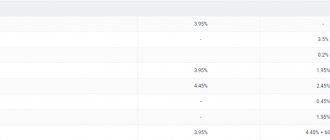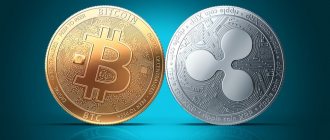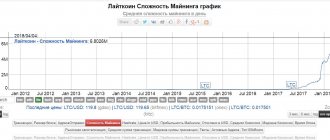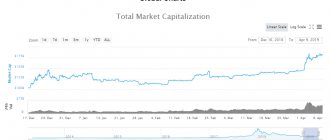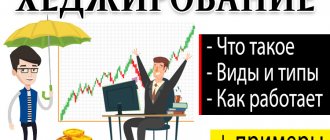What is the EOS cryptocurrency?
The idea of the project is to combine the capabilities and prospects of different smart contract technologies (for example: Bitcoin security, Ethereum computational support) in one simple, scalable platform of decentralized applications for the average user.
EOS promises to dramatically change the decentralized application industry by lowering the barrier to entry for developers and anyone else who needs solutions based on blockchain technology.
The ultimate goal of EOS is to build a secure and transparent blockchain platform for decentralized applications. One that could easily scale to thousands of transactions per second, while providing equally convenient access to the service for developers, entrepreneurs and ordinary users. So what is EOS? The final goal of the project is a full-fledged operating system for decentralized applications ( dapps ) aimed at the Internet. This operating system will provide services such as user authentication, cloud hosting and server hosting.
Authentication
The EOS Network is a ready-made platform for decentralized applications that allows developers to use a full authentication system. User accounts are assigned rights with different levels of access, and the accounts securely, locally store their own personal data. Recent EOS updates have added the ability to use one common database for multiple accounts, as well as the ability to store user data on a local machine off the blockchain.
The network provides the ability to restore an account if it has been stolen or compromised.
Everything is in the cloud
Server hosting and cloud storage are also part of the EOS ecosystem. This means that application developers will be able to create and run applications and web interfaces on this hosting and in the cloud. They will also be able to use the EOS network communication channels. This opens up great opportunities for developers, as they will receive a ready-made infrastructure where the issues of secure data storage and transmission will already be resolved.
Developers will have access to resource load and traffic analytics through EOS and will be able to configure resources individually for each application. This service is paid for by storing EOS tokens.
Scalability
Most major blockchains (Ethereum and Bitcoin, for example) use “state consensus”. This means that anywhere on a network of computers, the current state of the entire blockchain can be checked to prevent fraud and confirm transactions. The blockchain in these cases represents a graph of the state of the system. When a new block is added to the blockchain, network nodes take each transaction from the block and update the state of each address associated with that transaction.
When using "event consensus", the focus is on transactions (or simply messages), as opposed to state. Instead of checking the state of the network, nodes check the sequence of events that just occurred to obtain information about the state of the network. The result is a system that takes longer to confirm all transactions from the start, but has a much higher transaction throughput while running.
Simply put, EOS can easily scale to speeds of one million transactions per second on a single node. This means that in a network of several nodes, the throughput can be infinitely large .
Free use
Applications built in the EOS ecosystem do not require micropayments for end users to transfer, for example, messages or use other blockchain functions. The application developers themselves determine the monetization mechanism and how the transaction fee will be charged, which is one of the lowest in the blockchain industry.
EOS Features
The EOS platform provides a governance model that is based on the ability to vote on which transaction to approve, determine whether an application is working correctly, and decide whether to make changes to the code of applications or the EOS system itself. This approach to governance means that the community will be able to democratically influence the development of the network: improve the code and correct errors in it.
High performance
The EOS system reduces processing delays and increases productivity by structuring generated blocks (currently produced in 3 seconds and tested in 0.5 seconds) into “cycles”. The loops are in turn structured into “threads” that run in parallel. This allows messages and transactions to be sent and responded to within individual blocks and between blocks, bringing the theoretical lower bound on response times to simply the time it takes for messages to travel across the network.
Accounts
Unlike Bitcoin and Ethereum, where the public key is the account from which transactions are sent, EOS implements a different principle.
It is closer to traditional web applications. You create a 12-character personalized account in EOS, for example eocentralio
, and the private key will be the password to the created account.
This is a somewhat simplified description - everything is explained in detail in the official EOS documentation.
There is one “but”: it is impossible to create an account unless you have another account with a certain amount of EOS. That is, to interact with the network, you need to ask a user who already has an account to create an account for you.
And it's not free! What??
Yes, yes, the classic “chicken and egg problem”, and it has to do with how resources are allocated in EOS. More on this below.
As a result, services have appeared that offer to create an account in EOS for a modest fee.
Articles with detailed instructions have already been published, but I cannot recommend any service, since I have not used any of them.
Team and community
The EOS project is being developed by Block One, led by Dan Larimer (co-founder of the super successful projects Bitshares and Steemit ) and Brendan Blumer. Both have serious experience and weight in the crypto industry, as creators of successful projects. In addition, Block One employs more than 35 experienced developers with many completed projects under their belt.
The EOS team is moving forward in accordance with the Roadmap they published in 2020 and have now successfully achieved many key development milestones. Their first release, EOS Dawn 1.0, came out on September 14, 2020. The second release of EOS Dawn 2.0 (December 4, 2017) provided resource control and communication between blocks. OES Dawn 3.0 was released on April 4, 2020 and a lot of functionality was added to it that was not even in WhitePaper. The release of EOSIO 1.0 was released in the summer of 2020 and became the first official version of the operating system. Many predict a bright future for the project. Definitely, this asset should be in your investment portfolio.
EOS has one of the largest and most active communities in the crypto world. There are many local sites, channels and communities on social networks. All this indicates investor trust, as well as a well-built relationship between the team and the community.
Key EOS Resources:
- Official website https://eos.io/
- Github https://github.com/eosio
- Steemit https://steemit.com/@eosio
- Medium https://medium.com/@eosforumorg
- Twitter https://twitter.com/eos_io
- Telegram Telegram group
- Facebook https://www.facebook.com/eosblockchain
History of EOS
The author, ideological inspirer and direct developer of the platform was Daniel Larimer, who has worked on Stemit and Bit Shares. Actually, EOS is a new version of the beloved and familiar ether from the company Block.one. Although, let’s be honest, with the author’s name, not everything is as smooth as with his “cryptographic child”.
The EOS platform was created in the summer of 2017, and what is noteworthy is that the author had the idea for a long time, as he himself claims, since he received his bachelor’s degree in computer science 15 years ago. During the ISO, more than 1 billion tokens will be distributed for this token according to the following scheme:
- 200 million put up for auction in the first 5 days;
- 7000 million are available until June 1 of this year;
- 100 million will remain in the developers' accounts, just in case.
The fundraising started on June 26 last year and has not yet reached its final mark. Therefore, if you are still wondering where to invest rubles, it’s time to consider the prospects of EOS or find other ways for yourself in my material. But it will not be possible to do this directly.
EOS cryptocurrency
EOS uses a unique token sale technology that no one has used before. The ICO was launched on June 26, 2020 and will run for a whole year. A total of 350 periods will be held. At the end of each period, the total number of EOS tokens allocated for that period will be distributed to participants based on the amount of ETH they contributed divided by the total contribution.
During this time, the EOS cryptocurrency was added to all major known exchanges, so that the value of the coin is already determined by the market. All this provides a lot of opportunities for investors, since there is enough time to analyze what the team is doing and draw their own conclusions about the future of the project.
The EOS token itself does not have any functionality. Developers will need it to create their own tokens within applications or for voting on the EOS platform.
EOS Features
Among the features it should be noted:
- High flexibility;
- Wide use;
- Frequent use;
- Volumetric scales;
Learn more about each EOS feature
High flexibility
To debug or eliminate bugs in applications built on the EOS blockchain, the system has the ability to freeze and pause them, which will provide the highest reliability and flexibility, which is valued by application developers.
Wide use
Research shows that immediately after a token is released, it spreads at a rate of 341 days, which is very advantageous. The recently calculated number of “users” reaches about 440-450 million people.
Frequent Use
The analysis of the developers confirmed that the crypt is often used by users, both in the digital sphere and in other existing ones. This is due to the fact that EOS is an excellent assistant in solving problems in various areas of life.
Volumetric Scales
EOS can be summed up in one word – scale. Every day, cryptocurrency can support up to a thousand (more precisely, up to 1300-1442 or more) decentralized applications, regardless of the diversity of their specialization and functionality.
The already high scalability of EOS is enhanced by such features as parallel execution of tasks and asynchronous communication.
Additionally, the platform can seamlessly separate authentication from execution.
EOS wallet. Where to buy EOS cryptocurrency
Currently, the EOS cryptocurrency has its own blockchain. This is an independent coin that should be stored in the original wallet. There are a lot of wallets. We recommend using the proven desktop wallet simplEOS. This wallet supports multi-accounts and also supports multiple airdrops that are currently happening on the EOS network.
You can buy EOS cryptocurrency on more than 130 cryptocurrency exchanges, here are the largest of them:
- Binance
- Huobi
- Kraken
- Bifinex
- Bittrex
- Cobinhood
- Kucoin
- Bibox
- HitBTC
Is EOS a scam?
This video review well describes the main features and prospects of EOS.
https://youtu.be/nVpII69yFIA
The blogger emphasizes the following points:
- The platform itself with full functionality does not yet exist.
- There is no official wallet.
- When purchasing tokens, large capitals are concentrated in the hands of certain investors, which leads to the centralization of the system.
- The developers did not explain what the 10% of the tokens they own will be spent on. So far, we can only see large investments in promoting the platform.
- It was promised that EOS tokens would not be listed on exchanges until the ICO was over, but the team did not keep their promise.
- Larimer is known in the blockchain community for launching and then abandoning ambitious projects. BitShares and Steemit, for example, lost their positions significantly after the ICO.
According to icodrops.com, EOS has a high level of hype.
Opinion from icodrops.com.
This is marked with a green arrow in the screenshot. At the same time, the risks for investors are considered low. This assessment refers primarily to advertising sponsorship, and not to investing money in actual development.
Opinion icobench.com.
ICO Bench, on the contrary, evaluates the project well and gives it a rating of 4.4 out of 5 points. In the screenshot on the right there are light green numbers.
It’s impossible to say for sure whether EOS is a scam or not; some EOS reviews are unreasonably optimistic. The EOS cryptocurrency is a promising, but rather unreliable asset, at least until a working version of the platform is presented.
